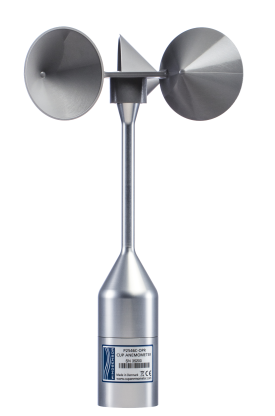Comprehending Different Types of Anemometers for Various Applications
Comprehending Different Types of Anemometers for Various Applications
Blog Article
All You Need to Find Out About Anemometers: How They Function, Why They Issue, and Where to Utilize Them
Anemometers, however typically overlooked in the world of clinical tools, play a vital role in numerous areas, offering beneficial understandings right into wind rate and airflow patterns. As we dig into the intricacies of anemometer modern technology, we will reveal the inner workings of these tools, their significance, and the essential considerations when choosing the best anemometer for details applications.

Anemometer Fundamentals
A necessary tool used to gauge wind speed and instructions, the anemometer plays a vital function in weather forecasting and different markets. An anemometer normally is composed of three or four cups that revolve in the wind, a vane that points right into the wind, and sensors to track the activities or rotations.
There are various types of anemometers available, consisting of mug anemometers, vane anemometers, hot-wire anemometers, and sonic anemometers, each with its one-of-a-kind attributes and applications. Mug anemometers are typically utilized for standard wind speed measurements, while vane anemometers are liked for directional dimensions.
Concepts of Anemometer Procedure
Building on the foundational understanding of anemometer basics, the concepts of anemometer procedure clarify the mechanics behind wind speed and instructions dimensions. Anemometers operate the concept of airflow influencing a sensor, triggering it to revolve. Mug anemometers, as an example, have 3 or more mugs that capture the wind, triggering them to rotate quicker as the wind speed boosts. The rotation speed is then exchanged a wind rate measurement. Vane anemometers, on the other hand, make use of a tail or a probe that aligns itself with the wind instructions, providing a dimension of wind instructions based upon the alignment of the sensor. Hot-wire anemometers count on a warmed cable that cools off as wind passes over it, with the rate of cooling identifying the wind rate. Ultrasonic anemometers step wind rate and instructions by examining the time it takes for ultrasonic signals to travel between transducers. Understanding these concepts is vital for reputable and precise wind measurements in various applications.
Relevance of Anemometers
The relevance of anemometers in meteorology and different sectors can not be overemphasized. Anemometers play a crucial function in gauging wind rate and instructions, offering important information for weather projecting, environment research studies, ecological tracking, and aeronautics procedures. Meteorologists rely upon anemometers to gather exact wind data, assisting them comprehend weather patterns, predict storms, and issue timely warnings to the public. In sectors such as construction, agriculture, renewable resource, and maritime procedures, anemometers are made use of to optimize processes, ensure safety and security, and boost effectiveness. For instance, wind farm operators make use of anemometers to analyze wind conditions and make the most of power production from wind turbines. In the maritime market, anemometers aid ship navigating by supplying real-time wind details to captains, aiding them make notified choices to make sure secure voyages. On the whole, anemometers are essential devices that contribute considerably to safety, efficiency, and informed decision-making in weather forecasting and a vast array of industries.
Applications Throughout Various Industries
In the eco-friendly energy sector, anemometers play a vital role in assessing wind problems for wind ranch placements, making sure ideal energy production. Industries like building and construction and mining utilize anemometers to keep an eye on wind rates, crucial for safety and security procedures, specifically when functioning at elevations or in open-pit mines where strong winds can present dangers. In farming, anemometers help farmers in managing crop splashing by providing real-time data on wind rate to prevent drift.

Selecting the Right Anemometer for Your Requirements
For general purposes, a mug anemometer is ideal for measuring wind speed, while a vane anemometer supplies wind instructions data. wikipedia reference Hot-wire anemometers are excellent for low airspeed dimensions, and ultrasonic anemometers use high accuracy and resilience.

Verdict
Finally, anemometers play a critical function in gauging wind rate and instructions throughout different markets. Recognizing the principles of anemometer operation is necessary for selecting the best gadget for specific needs. From weather forecasting to aviation, anemometers are essential devices for making sure and gathering precise data safety and security in various applications. When picking the most appropriate gadget for gauging wind problems., it is crucial to consider the significance of anemometers in order to make educated choices.
There are various types of anemometers offered, consisting of cup anemometers, vane anemometers, hot-wire anemometers, and sonic anemometers, each with its one-of-a-kind functions and applications. Mug anemometers are frequently used for standard dig this wind rate measurements, while vane anemometers are favored for directional measurements. Hot-wire anemometers are suitable for low airspeeds, and sonic anemometers are ideal for high-precision dimensions in research and industrial settings.Structure on the foundational understanding of anemometer essentials, the principles of anemometer operation illuminate the mechanics behind wind speed and instructions dimensions. For basic functions, a cup anemometer is ideal for measuring wind speed, while a vane anemometer offers wind direction data.
Report this page